For an organization that ballyhooed every dollar raised to build a performing arts center, cheered the arrival of 2,458 tons of Indiana limestone and posed for countless photo ops, the Smith Center for the Performing Arts seems, well, quiet this time of year.
And just when there’s so much to get nutty about: 10 touring Broadway productions scheduled for next season, including the much coveted Book of Mormon; a lingering high from the six-week run of Wicked last summer; memories of the night David Sedaris had us laughing our pants off. And who could forget the Las Vegas Philharmonic’s March performance of Mahler’s Second Symphony with three Las Vegas choirs and operatic soloists?
But there will be no fireworks, champagne waterfalls or public fist bumping on the Smith Center’s first-year anniversary March 10. As Myron Martin, president and CEO, points out, the center is already here, already a landmark; there’s nothing more to sell. They just need to keep the wheel oiled.
While wizards behind the scenes plan the 2014-15 season, about 60 performances will roll onto the stages at the five-acre campus in the next two months alone, including Burt Bacharach, Bobby McFerrin, Arlo Guthrie, SF Jazz Collective, Ira Glass, the Philharmonic and Shrek.
Officials constructed the first season with a little of everything, and after notching 420,000 individual ticket sales, 11,450 Broadway-season subscribers and 657 buses full of school kids, the Valley’s largest cultural institution is still sorting out audience interest. Keeping most of the people happy most of the time can be an arduous task. Productions are costly and labor intensive, and our community is as diverse culturally as it is financially.
Now, with an impressive first year on the books, the Smith Center is looking forward. Here, we answer a few of the questions still hanging above the iconic bell tower.
Can the Smith Center stay affordable?
In Tucson, Arizona, tickets to the touring production of Wicked start at $45. In Orlando, Florida, it’s the same. On Broadway, seats for the musical about the Wicked Witch of the West start at $82—more than $90 with fees.
“It’s true,” Martin says. “You don’t make money selling tickets to Wicked for $20.” Still, $24 is the starting price for this season’s Broadway musicals at the Smith Center.
After decades in show business, Martin knows it would be much easier to charge prices more in line with commercial rates. But the Smith Center’s nonprofit mission is to educate and serve the entire community, which includes gearing ticket prices to diverse income brackets. The question is, can the Smith Center sustain that altruistic strategy?
To do so requires fundraising and sponsors. According to Martin, earned income, including ticket sales, accounts for 80 percent of the Smith Center’s annual $25 million operating budget, while the remaining 20 percent comes from money raised. Corporate sponsorships by Ford and Audi help fund the Broadway and Speaker series, respectively. Ford is the Smith Center’s biggest sponsor, and without the support of Audi, Martin says, “We couldn’t afford to bring Frank Rich, Ray Kurzweil and Stephen Sondheim.”
Additionally, underwriting through the use of donations helps fund the center’s educational mission (including busing kids to shows) and, for now at least, the resident companies—Las Vegas Philharmonic and Nevada Ballet Theatre—that pay to use Reynolds Hall and Troesh Studio Theatre.
Ticket prices, Martin says, are based on the calculated cost of presenting a performance and the estimated number of ticket sales. Each show has its own profit and loss statement, and not every show is designed to be a sellout.
While the Smith Center wants to stay committed to different audience interests, the types of shows that come through or return to the Smith Center will be partly determined by feedback, generally in the form of ticket sales. The first-season goal for Broadway Las Vegas subscriptions was 6,000; more than 11,000 were sold. In fact, Martin said in February that every performance of every Broadway show sold out during the Smith Center’s inaugural season.
“For the first year, our goal was to program more than we might normally and see who will come. We’re constantly improving, always asking for feedback. The most telling feedback is by ticket sales. You get to vote by buying a ticket.” –Kristen Peterson
Is Reynolds Hall big enough?
More Smith Center
When the most popular Broadway shows play the 2,050-seat Reynolds Hall, the Smith Center is sacrificing thousands of dollars for each performance. And they’re doing it by design.
“If we go way back to pre-design, way back before we had really drawn the Smith Center on paper, we had logs of conversations about size,” Martin says. “Our Broadway partners, even back then, thought something like 2,300 or 2,400 seats would be better, because when you do the blockbusters, that extra 300 seats means a lot of money to a Broadway show.”
If you calculate those extra seats at $24 apiece, the lowest ticket price at Reynolds Hall, it means between $6,000 and $8,400 in gross ticket revenue per show. Those are some pretty Wicked profits to be leaving on the table.
“There’s not a show we have that doesn’t have tickets that start at $24, and you can’t get any lower than $24, anywhere, no matter what size the venue,” Martin says. “But I get the argument, and if I came to town to build a commercial music venue, where it was all about the money, then we would probably have built 2,500 or 3,000 seats.”
Instead, Martin remembers listening to friends with trained ears. “Our acoustic friends, those who would bring our local orchestra or the Cleveland Orchestra or the Israel Philharmonic or any of the rest, were telling us, ‘Try not to go too far over 1,700 or 1,800 seats, because when you get over 2,000 or so, it becomes more and more difficult to have an acoustically perfect hall.’”
So Martin started asking questions. “We had conversations with our acousticians and our theater designers long before we started drawing it, where we said, ‘If we were to land in the 2,000 to 2,050-seat range, can we guarantee acoustical perfection?’” Martin says. “The answer was yes. It we had gone up to 3,000 seats, we couldn’t have the acoustics we have in that place.”
That approach might not maximize profits, but it’s sound reasoning. –John Katsilometes
What effect has it had on local performing arts?
For longtime followers of the Las Vegas Philharmonic like myself, hearing the Philharmonic perform for the first time at the Smith Center was like listening to an entirely different orchestra. The acoustics enabled a sound of remarkable clarity and depth, highlighting each individual voice, and the musicians could actually hear each other, improving the cohesiveness of the orchestra. So positive are the reviews of Reynolds Hall that some touring groups and other performers are eager to play in the new space. Audiences are also drawn to it, so much so that its effect has directly been felt by three longtime-Las Vegas institutions: Las Vegas Philharmonic, Nevada Ballet Theatre and UNLV’s Performing Arts Center, which includes Ham Hall and Judy Bayley Theatre.
Ham Hall was once the place for touring arts companies, but the Smith Center’s arrival has shifted performers from UNLV to the Downtown venue. In addition to the Phil and NBT, the Smith Center now boasts Yo-Yo Ma, Joshua Bell, the Assad Brothers, Linda Eder, Savion Glover, Chick Corea, Itzhak Perlman and Sweet Honey in the Rock on its calendar—all of whom have appeared at UNLV.
The university didn’t respond to our questions regarding the Smith Center’s impact on its performing arts schedule.
Resident companies tout the benefits of Reynolds Hall—acoustics for the Philharmonic, increased stage space for the ballet—along with the venue’s higher profile, which has resulted in increased ticket sales. But unlike touring groups, they rent the venue for their performances. The Smith Center agreed to give both companies the same rate they had at UNLV, but only for the first two years, which means next year, prices go up.
The Philharmonic, which has already raised some ticket prices to account for box-office fees, says it hasn’t determined if it will do so again next season in response to those increased costs. Much like the Smith Center, the nonprofit has its own financial calculating to do: Ticket-sale revenue generates only 40 percent of the cost of each performance, which can run from $75,000 to $125,000. That means 60 percent must be financed through fundraising and sponsorships. “It is a balancing act to have the best programs and artists possible at a price we can afford without compromising quality,” says Jeri Crawford, Las Vegas Philharmonic president and CEO.
Nevada Ballet raised its ticket prices when it left UNLV to perform at Paris Las Vegas and then raised them again when it settled into the Smith Center. The company says it will review prices on an annual basis, and that ticket sales were up at its two Smith Center concerts—by 42 percent for Jewels and 13 percent for The Nutcracker.
The Philharmonic’s first two performances at the Smith Center sold out, but ticket sales have leveled off since, even though the organization’s subscriber base is up as much as 20 percent. The company’s search for a new conductor, meanwhile, has surely been helped by the new venue, as guest conductors consider the chance to perform in Reynolds Hall.
While the Philharmonic has realized that classical musical audiences can be stretched pretty thin (two classical music touring performances were scheduled during the same week of a Philharmonic concert this past year), Nevada Ballet has wrapped performances by the Joffrey Ballet and New York City Ballet into its subscription series, and representatives say that touring dance companies stopping at the Smith Center benefit NBT. “Any time that an outside ballet or dance company performs in Las Vegas, it brings additional awareness to the art form, as well as provides a unique opportunity for education and outreach,” the organization said in a prepared statement.
Both companies have yet to complete a full season at the Smith Center, so final assessments haven’t been made in terms of impact. “It remains to be seen whether performing in a new, state-of-the-art facility will be viewed as more attractive to those interested in providing funding for dance,” NBT said. –K.P.

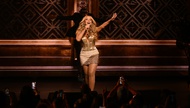
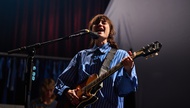


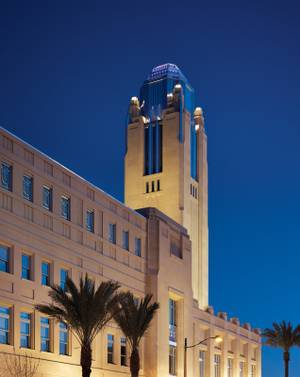
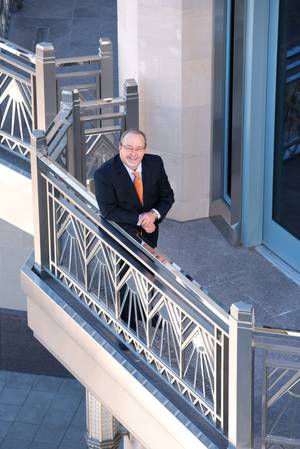
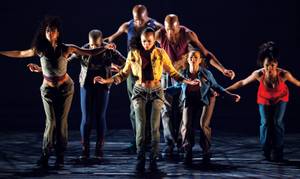
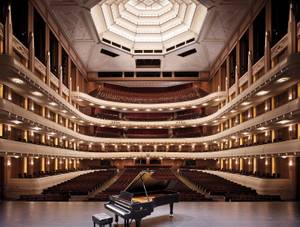
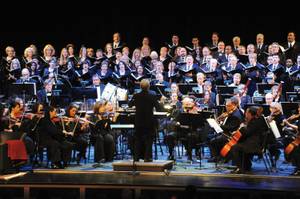
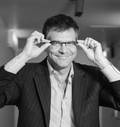



Previous Discussion: